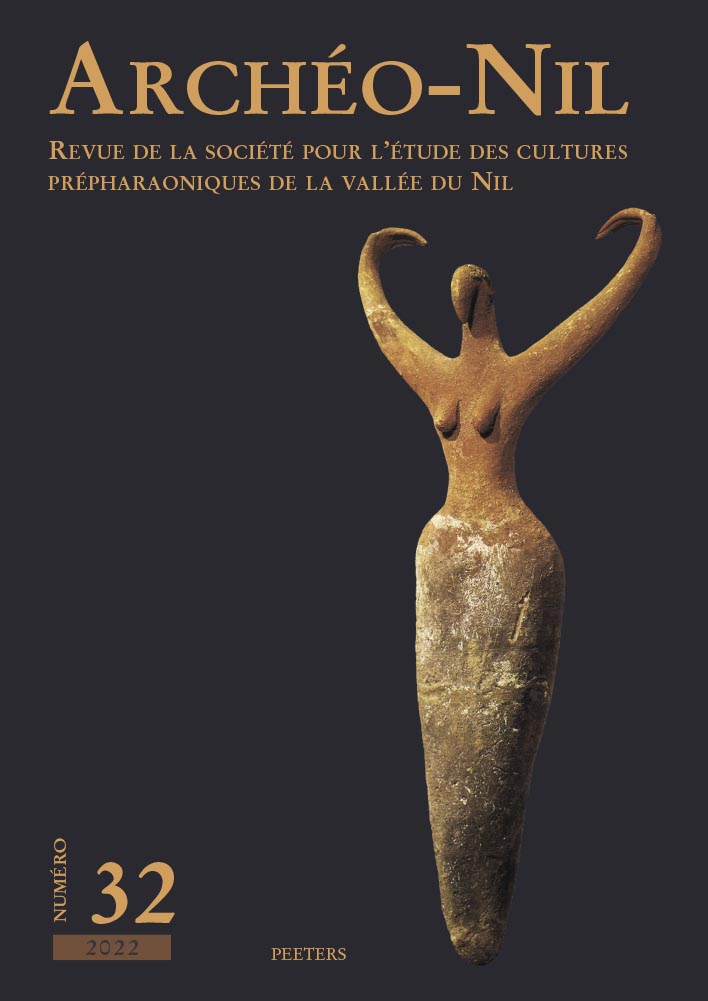 previous article in this issue previous article in this issue | next article in this issue  |

Preview first page |
Document Details : Title: The Earliest Private Statue of Ancient Egypt Subtitle: A Re-examination of the Statue of Hetepdief Author(s): ALLAN, Scott J. Journal: Archéo-Nil Volume: 30 Date: 2020 Pages: 59-72 DOI: 10.2143/ANI.30.0.3291295 Abstract : The statue of Hetepdief has never been accurately published, leading to erroneous interpretations of the base inscription and identification of the statue figure. This study provides a detailed line drawing of the base inscription, for the first time, to allow a more complete understanding of the statue and provide new information about the inscription. Unusual features of the base inscription set this statue apart from other Early Dynastic and Old Kingdom sculpture. These include the only complete spoonbill used as a phonetic hieroglyph and inverted lines of text, facing the statue rather than the viewer, neither of which are seen in other statues of this date. Dating can be based on the last king named on the statue, Ninetjer, making this the earliest private statue and earliest lines of extended text attested. While unclear if the figure is named Hetepdief, his association with the pr-dšr, and no explicit religious title, should discount his identification as a priest. La statue de Hetepdief n’a jamais été complètement publiée, ce qui a conduit à des interprétations erronées de l’inscription sur la base et de son identification. La présente étude fournit pour la première fois un dessin détaillé de cette inscription afin d’apporter une meilleure compréhension de la statue et de fournir des informations nouvelles sur la partie épigraphiée. Les caractéristiques inhabituelles de l’inscription distinguent cette statue des autres sculptures de la première dynastie et de l’Ancien Empire. Elle inclut la seule utilisation connue d’une spatule (oiseau) comme un hiéroglyphe phonétique ainsi que des lignes de texte inversées, face à la statue plutôt qu’au spectateur, pratiques qui n’apparaissent dans aucune autre œuvre pour la période considérée. La datation proposée à partir du dernier roi mentionné, Ninetjer, fait de cette sculpture la première statue privée et le premier texte complet attesté. Bien que le nom du personnage, Hetepdief, ne puisse être clairement confirmé, son association avec le pr-dšr, l’absence de titre religieux explicite, doivent minimiser son identification en tant que prêtre. |
|


